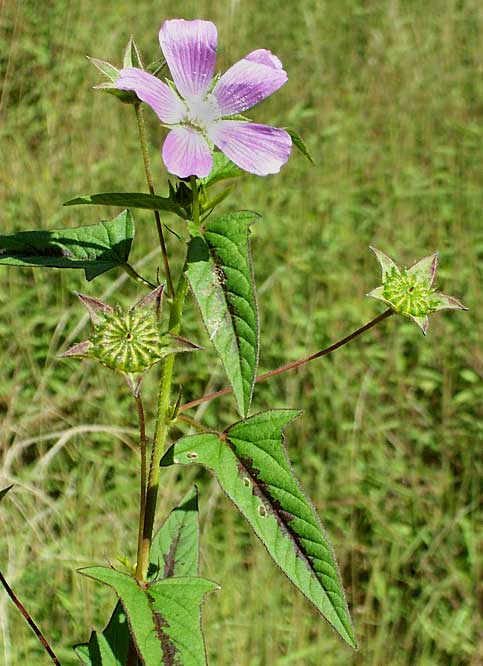An Excerpt from Jim Conrad's
Naturalist Newsletter

from the November 19, 2007 Newsletter issued issued from Pueblo Nuevo Solistahuacan, Chiapas, MÉXICO, at about 1740 meters in elevation, ± LAT 17° 11' 27"N, LONG -92° 53' 35"W.
"FIELD VIOLET"
Flowering prettily now in the very weedy garden abandoned because the invaders were threatening to invade more is the violet-flowered herb seen above. In Spanish the plant is called Violeta del Campo, which means "Field Violet." Of course it's not a real violet at all -- not a member of the Violet Family. It's ANODA HASTATA of the Hibiscus Family. The flower is about two inches across, or 5 cm.
Anoda is a native American genus containing about 24 species, several of which are found in Mexico. This one is listed as a weed in Weakley's Flora of the Carolinas.
In the picture, the two green things below the flower looking like wheels with radiating spokes are immature fruits subtended by five-pointed calyxes. Such flattish fruit-disks with radiating lines are somewhat distinctive for Anoda. The radiating lines represent partitions between the fruit-disk's carpels, a carpel being a cell in an ovary. When you slice a tomato, the triangular, slice-of-pie divisions inside are carpels. Therefore, we can see that ovaries in the genus Anoda have many carpels. This distinguishes the genus from Hibiscus, for example, whose ovary contains only five carpels.
Plants in the genus Anoda also often bear leaves with pointed basal lobes attached at right-angles to the midrib, as shown in the picture. Leaves with such lobes are said to be "hastate" or "halberd shaped," a halberd being a 15th- and 16th-century weapon with a spearhead of such a shape.